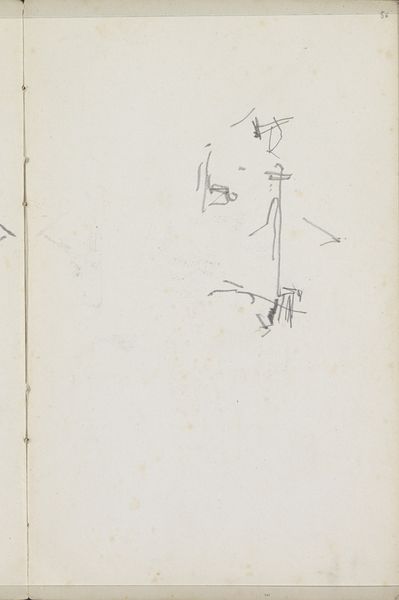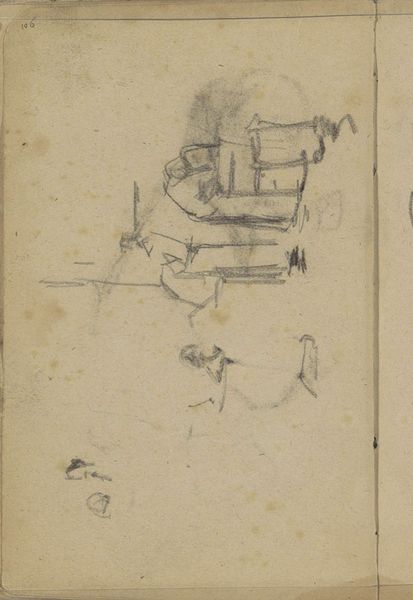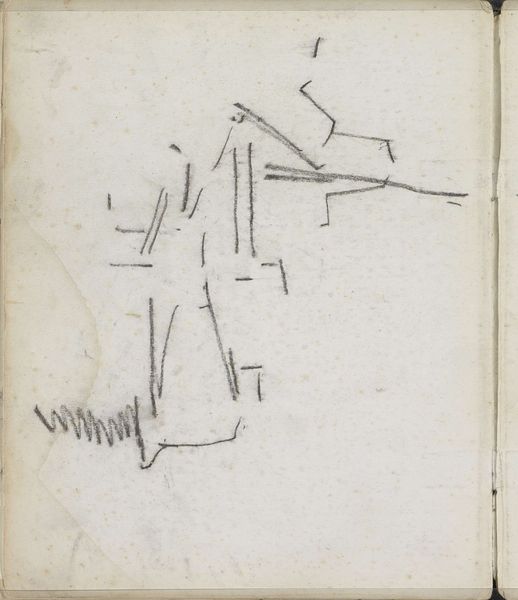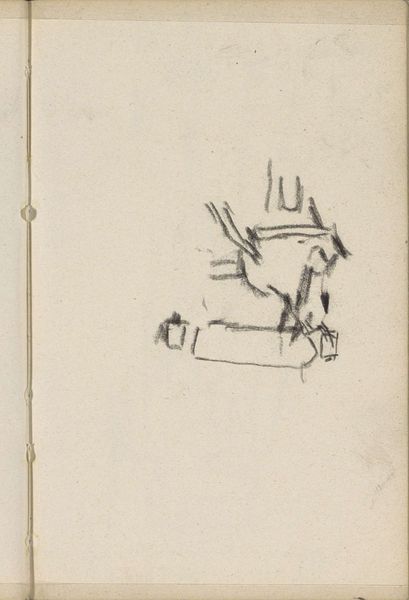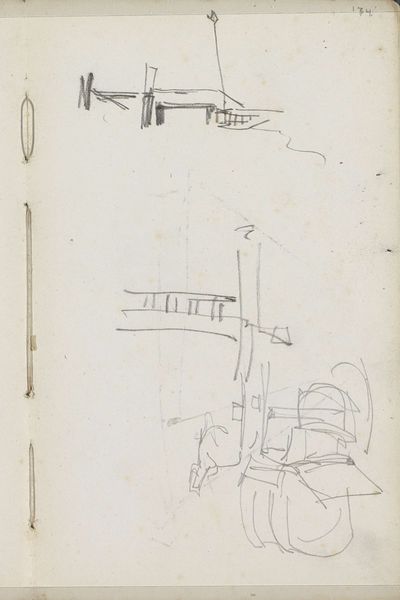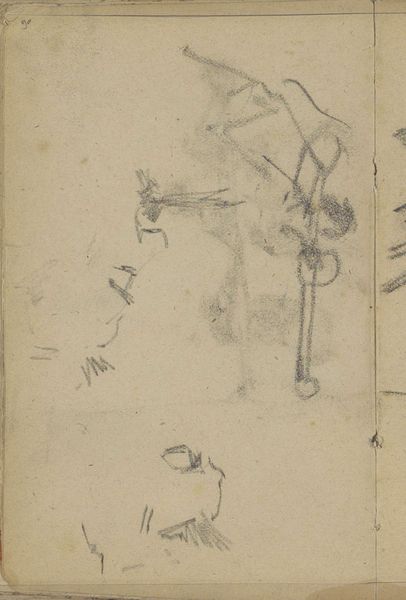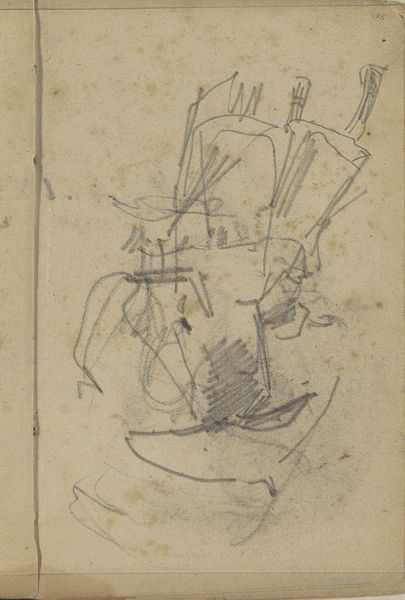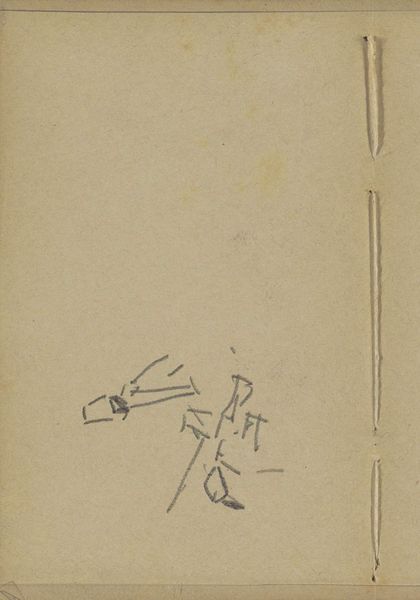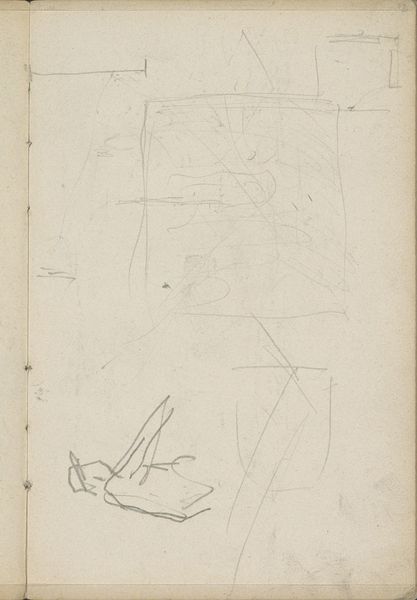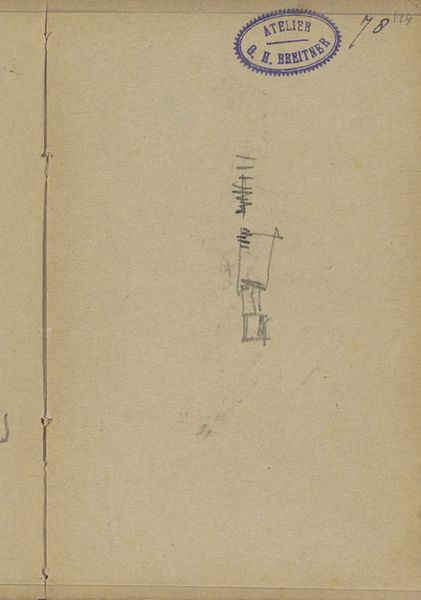
drawing, paper, ink
#
drawing
#
toned paper
#
quirky sketch
#
impressionism
#
pen sketch
#
sketch book
#
paper
#
personal sketchbook
#
ink
#
ink drawing experimentation
#
pen-ink sketch
#
line
#
pen work
#
sketchbook drawing
#
cityscape
#
sketchbook art
Copyright: Rijks Museum: Open Domain
Editor: So, this is Willem Witsen’s "Rijtuig en twee straatlantaarns" from 1888-1890, a drawing in ink on paper. It's a quick sketch, and I’m struck by the sparseness of the scene. The carriage almost seems stranded. How do you interpret this work? Curator: What strikes me is not the sparseness but what that very quality conveys about rapid urbanization. Witsen’s impressionistic style is often associated with a nostalgic yearning for a simpler, rural past. But here, in capturing the stark outlines of a carriage and streetlights, he might be commenting on the social inequalities exacerbated by the rise of industrial capitalism in Amsterdam. How does this almost clinical rendering contrast with romantic depictions of city life? Editor: I hadn’t thought of it that way. I was focusing more on the empty space, but the sketch-like quality actually makes a strong statement about progress and maybe even the alienation that comes with it. I can see the commentary on social inequalities. Curator: Exactly! Think about who benefits from the "progress" of the city and who is left behind in the shadows. Streetlights, meant to illuminate, can also cast harsh shadows, mirroring social divides. This wasn't simply a study of form; it's a quiet critique embedded within the urban landscape. What does that provoke in you? Editor: I see that the choice of medium – a quick sketch in ink – could reflect how fleeting and fragile these so-called advancements are for different classes of people, for the less privileged. I initially missed the nuance completely! Curator: Precisely. Art is a mirror reflecting our societal realities, often revealing uncomfortable truths about power, privilege, and progress. And sometimes it needs us to dig a little. Editor: I’ll definitely look at impressionistic art with a fresh perspective now. Curator: It's about reading beyond the surface, understanding art as a form of social commentary.
Comments
No comments
Be the first to comment and join the conversation on the ultimate creative platform.

